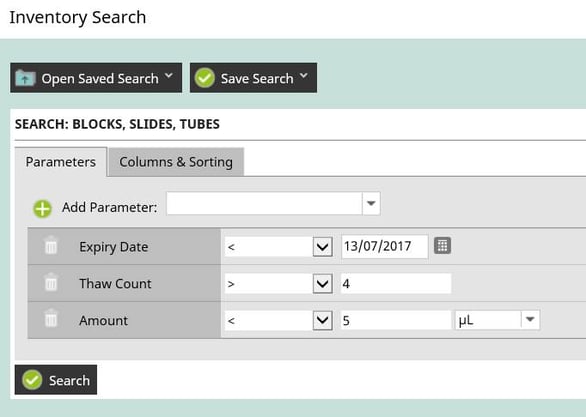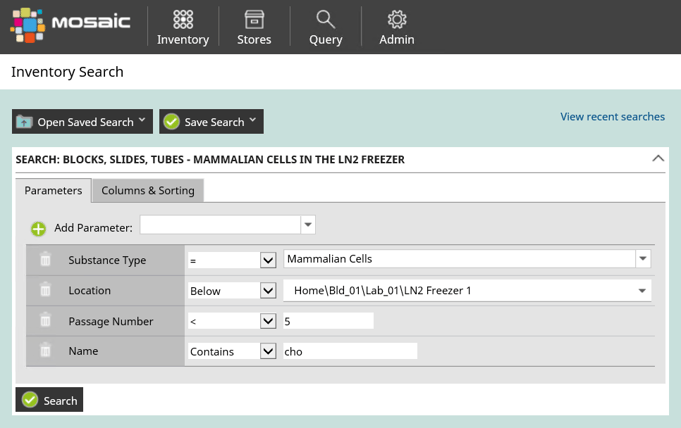Titian Software’s Tim Stroud asks:
How do you currently run an inventory search? Is it easy to find the samples you need to plan your experiments? Can you effectively identify and locate any samples in your inventory that need to be disposed of?
By using inventory management software such as Titian's Mosaic you will not only have an accurate record of the samples you have in your inventory, you will also have access to intuitive searching capabilities making managing your sample inventory and planning your experiments very easy.
Inventory Management Using Search
An important role for a Compound Management Group is to ensure expired/depleted inventory items are removed from the stores to free up space for new containers. An 'expired sample' could be defined as:
- A fixed date in the future after sample preparation
- The sample has gone through a certain number of freeze/thaw cycles
Mosaic software makes this easy, as expiry dates can be assigned to samples, and freeze/thaw cycles are tracked when samples are moved into and out of freezers. As sample is removed from a stock container, the volumes and amounts are also updated. All these pieces of information can be easily retrieved using Mosaic’s inventory search feature. Searches that are performed on a frequent basis can be saved to enable them to be easily re-run in the future.
As an example, let’s say that once a month the Compound Management Group wants to run a search to identify all containers within a particular freezer or location that have either:
- Passed their expiry date
- Have gone through >‘x’ number of freeze/thaw cycles
- That contain <x uL or mgs of sample
with the purpose of removing these samples from inventory and disposing them. These parameters are easily added to an Inventory Search query as seen in Figure 1 below.

Experimental Planning Using Search
Mosaic’s inventory search function can also be a valuable part of planning your experiments for the day. When you need to locate samples for an assay or identify if you have tubes of a particular cell line, a scientist will usually know some key information about the items they require, such as:
- The name of the cell line along with a particular passage number, or
- The compound submission date and its associated project name
Inventory search is a simple way of using this information to identify what physical stocks of these samples you have in your storage location(s). If you see that no stock is available or that the levels are running low, you can now request a re-synthesis of the compound by your chemists in advance, or ask the reagent provision group to re-bank a particular cell line from the master stocks.
Figure 2. Searching for Inventory based on some known criteria.

This blog focusses on one section of Titian’s extensive White Paper: The Essential Guide to Laboratory Sample Management, which reviews the challenges facing sample managers in a life sciences organisation. The white paper is free to download.
Get in touch with Titian's sample management experts.
About the author:
Tim Stroud worked for Pfizer for 19 years as a scientist in many different groups spanning veterinary medicine, in-vitro pharmacology, reagent provision, structural biology, and compound screening. He went on to work for MedImmune as a laboratory automation specialist. He joined Titian Software in 2014 as a Business Application Consultant.
